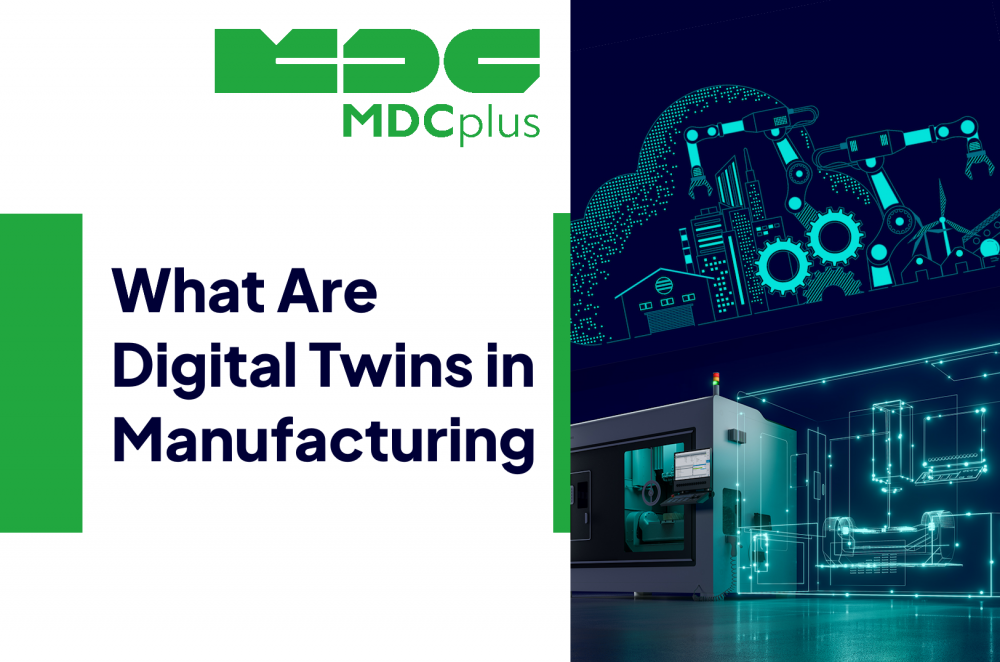What Are Digital Twins in Manufacturing? A Practical Guide to Smart Factory Simulation
Digital twins in manufacturing are no longer futuristic—they're operational. From machining centers and assembly lines to logistics and maintenance systems, digital twins are transforming how factories simulate, monitor, and optimize real-world processes in real time.
What Is a Digital Twin in Manufacturing?
A digital twin is a real-time digital replica of a physical object, system, or process. In manufacturing, this can include:
- A machine tool (e.g., CNC, lathe, press)
- A production cell or assembly line
- A full manufacturing facility
- An entire supply chain
These virtual models continuously receive data from their physical counterparts via sensors, controllers (PLCs), and IoT platforms. The result is a synchronized model that reflects the current state of the equipment—including performance, wear, load, temperature, and more.
How Digital Twins Work in Manufacturing Environments
-
Data Collection
Real-time data is gathered from machines via industrial protocols (MTConnect, OPC UA, Modbus). This includes cycle times, temperatures, spindle loads, vibrations, and tool wear. -
Model Synchronization
A virtual model—built in CAD/CAM, PLM, or specialized simulation software—is updated with live data, reflecting real-time status and behavior. -
Analysis & Prediction
The digital twin runs simulations and AI models to predict failures, suggest optimizations, or simulate changes without interrupting the physical system. -
Feedback & Control
In advanced implementations, the twin feeds data back into control systems to enable adaptive responses—adjusting speed, maintenance schedules, or routing.
Benefits of Digital Twins in Manufacturing
-
Predictive Maintenance
Anticipate equipment failures before they happen using historical and live data trends. -
Process Optimization
Identify bottlenecks, simulate what-if scenarios, and fine-tune production parameters without downtime. -
Quality Improvement
Analyze deviations between virtual and actual processes to detect quality drift early. -
Faster Commissioning
Simulate and validate machines or entire lines before physical deployment. -
Reduced Costs
Lower maintenance expenses, reduce scrap, and cut energy usage by operating with more precision and fewer surprises.
Real-World Use Cases
-
CNC Machine Shops
Digital twins simulate toolpaths, monitor spindle behavior, and compare NC execution to the original program. -
Automotive Manufacturing
Full assembly lines are digitized to improve throughput, minimize idle time, and validate design changes virtually. -
Aerospace Component Manufacturing
Complex multi-axis operations use digital twins to ensure geometric precision and thermal stability in machining. -
Industrial Equipment OEMs
Use digital twins during design to improve product performance, and after delivery to offer remote diagnostics and service models
Digital Twin vs. Simulation: What’s the Difference?
-
Simulation is static or semi-real-time. It’s useful for design validation and planning.
-
Digital twins are real-time and bidirectional. They reflect the live state of physical systems and can drive decision-making continuously.
In short: all digital twins involve simulation, but not all simulations qualify as digital twins.
How to Start with Digital Twins in Manufacturing
-
Start Small
Begin with one critical machine or process—like a CNC cell or robotic weld station. -
Select the Right Tools
Common platforms include Siemens NX, or MDCplus (for machine-level monitoring). -
Ensure Data Availability
Confirm that your machines support data output and that you can capture metrics like temperature, feed rate, and load. -
Integrate with MES or ERP
Link digital twins with manufacturing execution systems to make them operational, not just analytical.
Final Thoughts: Why Digital Twins Matter Now
In the push toward Industry 4.0 and smart factories, digital twins are no longer optional. They offer manufacturers a real-time mirror—and simulation sandbox—of their operations. They reduce guesswork, eliminate unplanned downtime, and empower data-driven decisions at every level of the shop floor.
Whether you're scaling precision machining, building out smart production cells, or future-proofing your plant, digital twins in manufacturing are a strategic advantage you can’t afford to overlook.
About MDCplus
Our key features are real-time machine monitoring for swift issue resolution, power consumption tracking to promote sustainability, computerized maintenance management to reduce downtime, and vibration diagnostics for predictive maintenance. MDCplus's solutions are tailored for diverse industries, including aerospace, automotive, precision machining, and heavy industry. By delivering actionable insights and fostering seamless integration, we empower manufacturers to boost Overall Equipment Effectiveness (OEE), reduce operational costs, and achieve sustainable growth along with future planning.
Ready to increase your OEE, get clearer vision of your shop floor, and predict sustainably?
